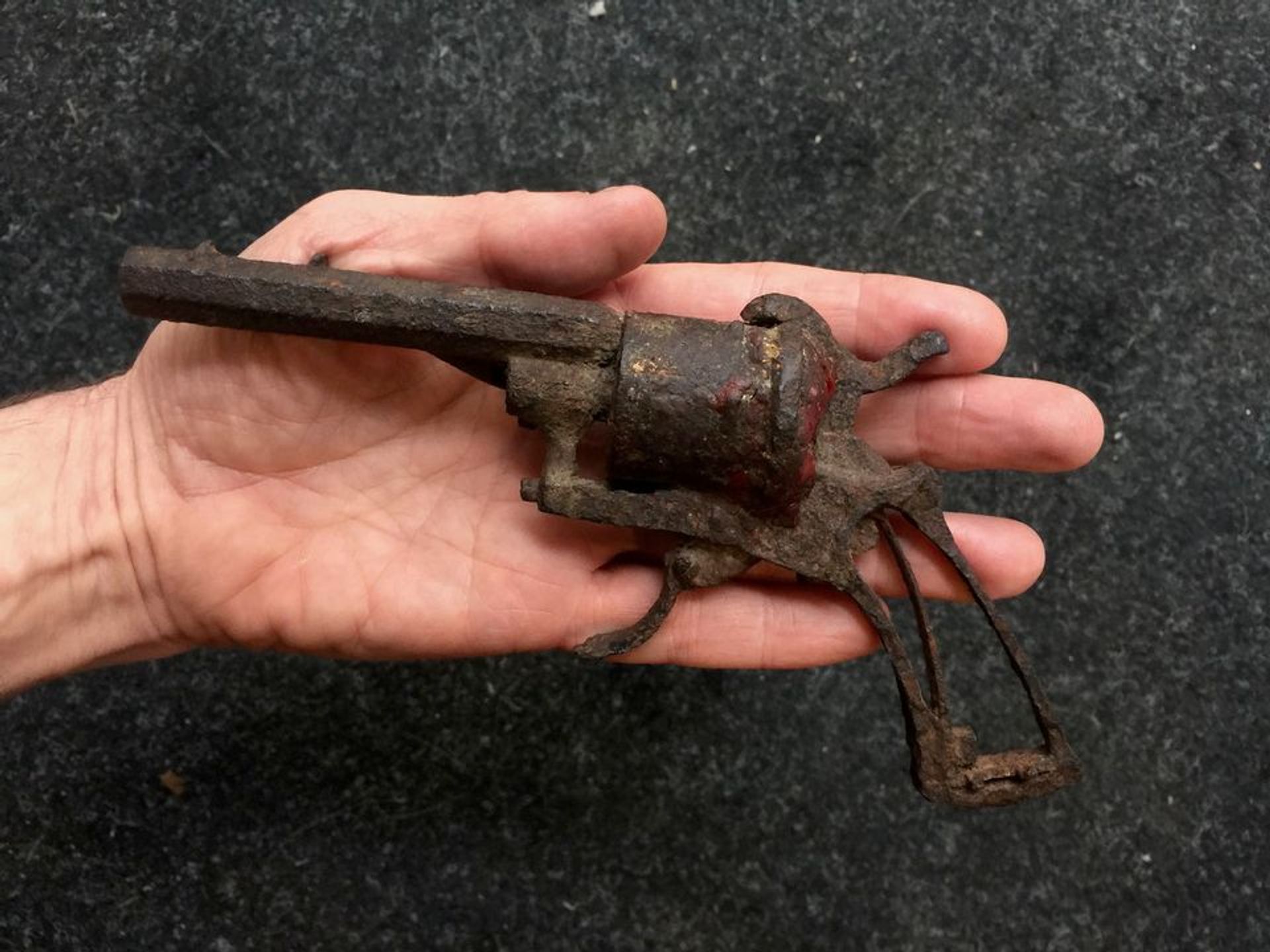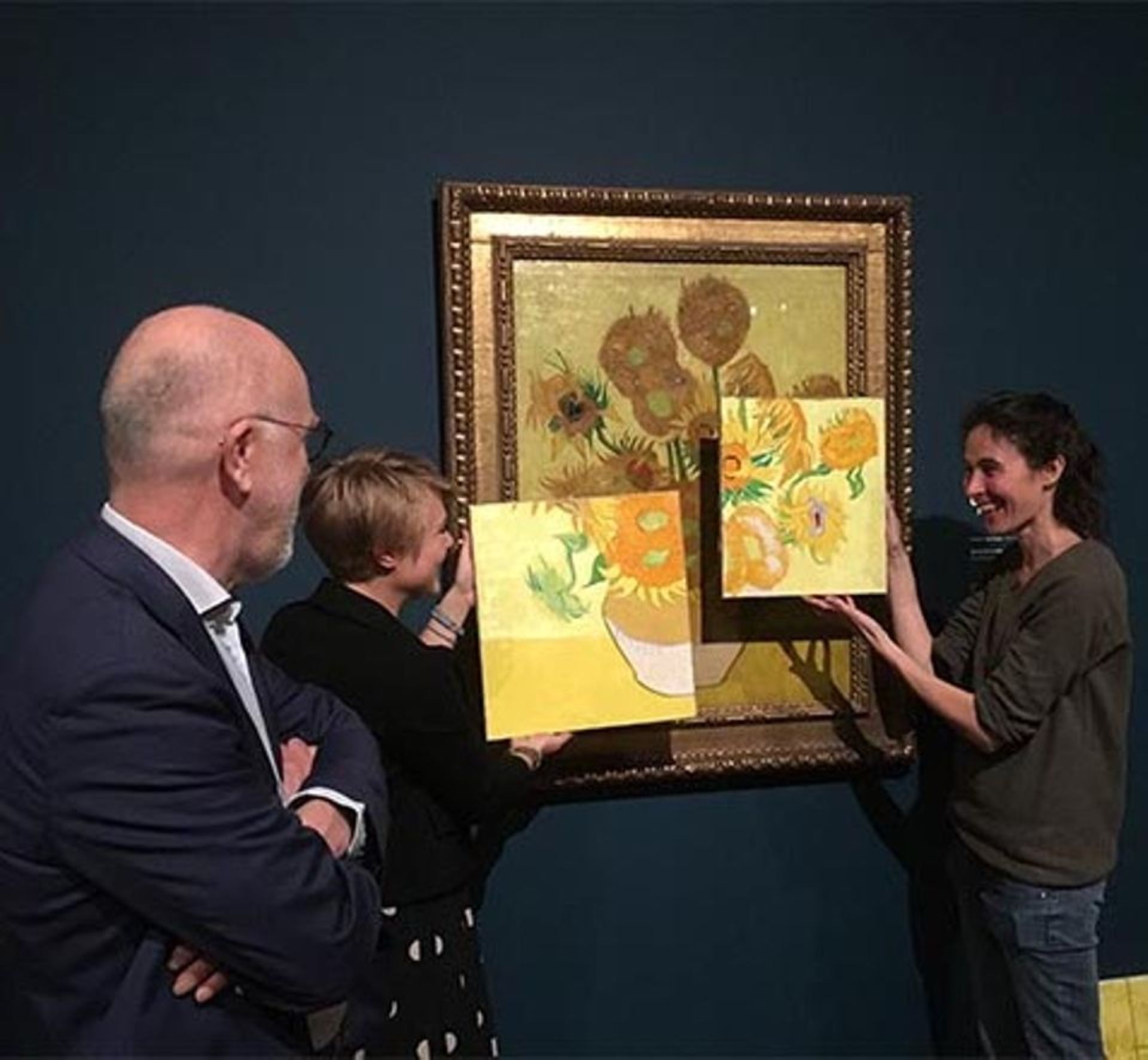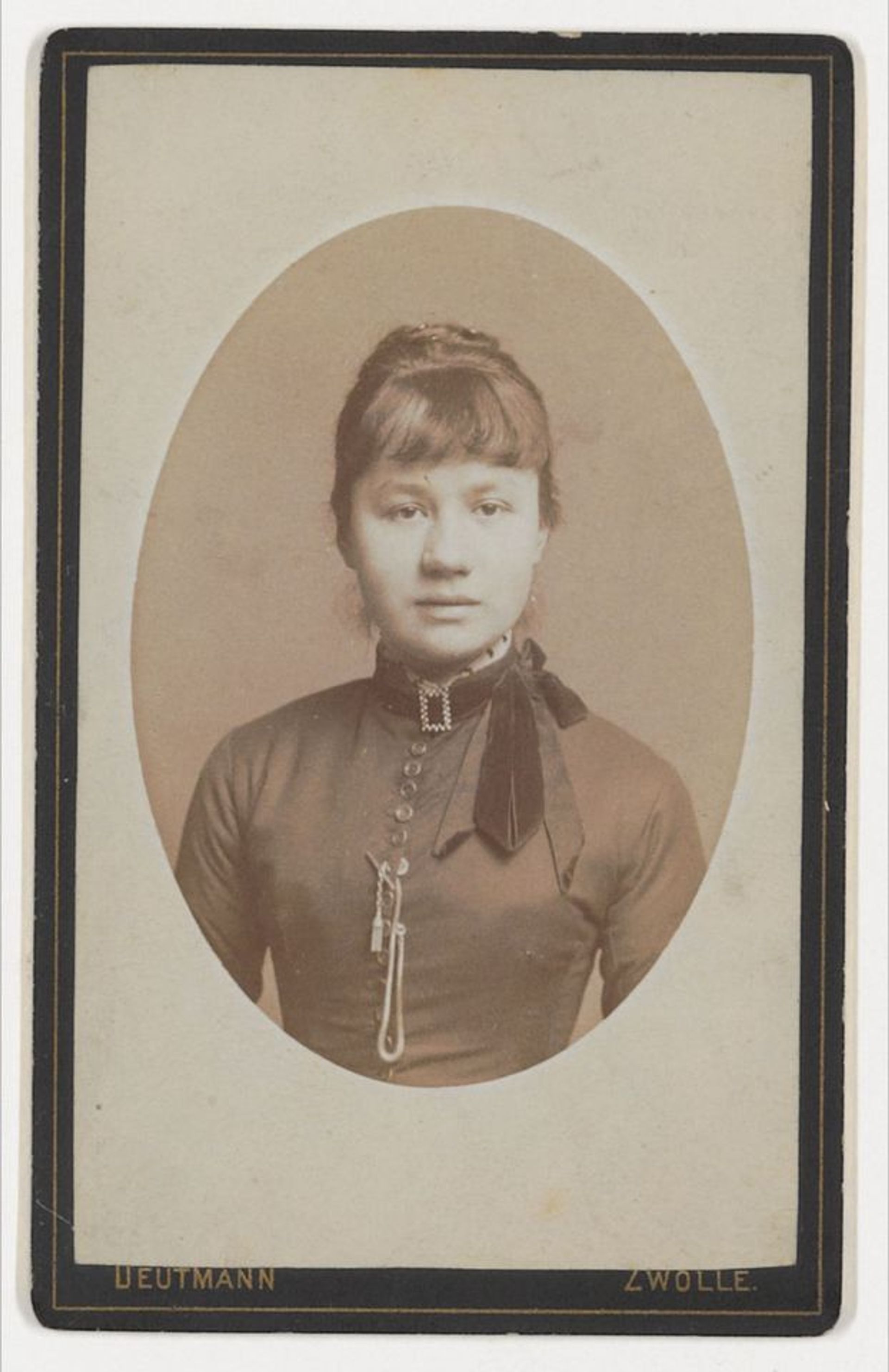As always, Van Gogh was constantly in the news in 2019—with major exhibitions, high value sales and conflicting news on whether it was safe for the Sunflower paintings to travel. But the biggest surprise of all was the emergence of the rusted gun that killed the artist.

The corroded Lefaucheux revolver which probably killed Van Gogh, sold by AuctionArt le Fur & Associés, Paris on 19 June 2019 Photo: Martin Bailey
It was an emotional moment for me when I picked up the corroded gun a few days before its auction in Paris, cradling it in my hands. I was surprised that the revolver was quite so small and light. My thoughts went back to that late afternoon in the summer of 1890 when Van Gogh set off for the wheatfields just above Auvers-sur-Oise, this weapon in his pocket.
The Lefaucheux gun had been found in around 1960 by a farmer in a field in the area where the artist is believed to shot himself, but at that time the discovery received no publicity. Examining the evidence, it now seems very likely—although not certain—that this was indeed the gun that killed the artist. And yes, I am convinced that it was suicide, not murder.
For AuctionArt in Paris, valuing the revolver proved difficult. As simply a rusty gun it was worth nothing, but with the Van Gogh connection it soared at the June sale to reach €162,500, way above the €40,000-€60,000 estimate. The identity of the buyer still remains a mystery. One can only hope that the gun will now be treated with due respect, not as a morbid trophy.

Artist Charlotte Caspers painted her own version to capture the original appearance of the Amsterdam Sunflowers (1889), for the exhibition Van Gogh and the Sunflowers, Van Gogh Museum Photo: Van Gogh Museum, Amsterdam
During 2019, eight major exhibitions were devoted to the artist. Van Gogh and the Sunflowers at Amsterdam’s Van Gogh Museum attracted 432,000 visitors. In London, Tate’s Van Gogh and Britain (for which I was the external co-curator) got 422,000, but for a longer run than the Amsterdam show. Vincent van Gogh: His Life in Art, at Houston’s Museum of Fine Arts, received 235,000 visitors—its best-ever attended show.

Curators Helewise Berger and Sjraar van Heugten with Vincent van Gogh’s Portrait of Marcelle Roulin (Van Gogh Museum, Amsterdam) at the exhibition Van Gogh’s Inner Circle: Friends, Family, Models at the Noordbrabants Museum Photo: © Jan-Kees Steenman
Five other shows opened this autumn and are still on until early in the new year: Van Gogh’s Inner Circle: Friends, Family, Models, Noordbrabants Museum, Den Bosch (until 12 January); Van Gogh and his Inspirations, Columbia Museum of Art (until 12 January); Vincent van Gogh: Under the Spell of the Hague School and Impressionism, Ueno Royal Museum, Tokyo (until 13 January, then Hyogo Prefectural Museum of Art, 25 January-29 March); Van Gogh: Still Lives, Museum Barberini, Potsdam (until 2 February); and Making Van Gogh: A German Love Story, Städel Museum, Frankfurt (until 16 February).

Photograph of Jo van-Gogh Bonger (1884) Van Gogh Museum, Amsterdam
Among the many new books this year, the most important is Hans Luijten’s biography of Jo, Vincent’s sister-in-law, which really breaks new ground. It is currently only available in Dutch, as Alles voor Vincent: Het leven van Jo van Gogh-Bonger, but an English edition (All for Vincent) should be out within a couple of years. Nora and Stefan Koldehoff published a book in German on the notorious Van Gogh fakes scandal of the late 1920s, Der van Gogh-Coup: Otto Wackers Aufstieg und Fall. Perhaps I could also mention my own latest volume, Living with Van Gogh: The Homes & Landscapes that Shaped the Artist.

Van Gogh's Arbres dans le jardin de l’asile (1889) Courtesy of Christie’s
This year eight Van Gogh paintings and drawings were sold at auction, the largest number since 2015. By far the most important work was Arbres dans le jardin de l’asile of 1889, which sold for $40m at Christie’s, New York, on 13 May. Painted in the garden of the asylum, its powerful colours and brushwork made it a real winner at the sale. The previous day the rather faded 1890 drawing Evening Landscape with Two Peasants went for a still substantial $3m at Sotheby’s, New York.
In October, the Pandolfini auction house in Milan sold two works by Van Gogh that were once in the collection of the convicted Italian fraudster Calisto Tanzi: Pollard Willow of 1881 (€800,500) and Still Life with a Basket of Apples from 1885 (€495,500).
Two Van Gogh drawings were also offered for sale from another tainted source, the Aristophil collection. It had been amassed by a French company that had invested in historical manuscripts and then went bust in 2015. Parts of the collection are being sold off by the auctioneer Aguttes in Neuilly-sur-Seine, outside of Paris, to help towards reimbursing investors. Champ de blé fermé par un mur (1890) sold for €390,000 on 1 April. The small sketch Tête d'homme au chapeau (1886-87) was estimated at €80,000-€120,000, but failed to sell.
The Aristophil collection also included an important 1890 letter from Van Gogh to the art critic Albert Aurier. Sold at Aguttes for €107,900, it was bought by the Van Gogh Museum. Not many manuscript letters of historical figures fetch this sort of sum.
Another Van Gogh drawing from a New York private collector sold at Christie’s, Paris, on 28 March: Femme debout (1882) went for €514,000.
The most recent sales, at Sotheby’s in New York on 12-13 November, comprised of two paintings: People strolling in a Park in Paris (1886), which sold for $9.7m, and Paysan brûlant de mauvaises herbes (1883), which went for $3.1m and was jointly acquired by the Van Gogh Museum in Amsterdam and the Drents Museum in Assen.
And, finally, a round-up of other Van Gogh news. The year began with apparently contradictory statements about two versions of the Sunflowers. On 11 January the National Gallery in London announced that next year it would be sending a fundraising tour of 60 paintings to the Far East, with its Sunflowers as the leading work. The pictures will go to the National Museum of Western Art, Tokyo (3 March-14 June 2020); the National Museum of Art, Osaka (7 July-18 October 2020); and the National Gallery of Australia, Canberra (13 November 2020-14 March 2021).
Just 13 days after the National Gallery’s announcement, the Van Gogh Museum put out a statement saying that its version of the Sunflowers would never travel again, because of its fragility. Although both paintings have different condition issues, the timing of the London and Amsterdam statements still came as a surprise.

Caption: Emilie Gordenker will take over at the Van Gogh Museum in February 2020 Photo: © Frank van den Burg
By the end of 2019 the Van Gogh Museum is expected to have welcomed just over 2.1m visitors, making it the second most visited Dutch museum, a bit behind the Rijksmuseum. Axel Rüger left as director of the Van Gogh Museum in May, after 13 years, to become the chief executive of the Royal Academy of Arts in London. His successor at the Amsterdam museum will be Emilie Gordenker, currently director of Mauritshuis in The Hague, who takes over on 1 February—inaugurating a new era.
• In other Van Gogh news: The Meet Vincent van Gogh experience will open shortly in London, running from 7 February-21 May 2020. Created by the Van Gogh Museum, it is billed as “an interactive and multisensory experience”. The venue is 99 Upper Ground (near the National Theatre).



